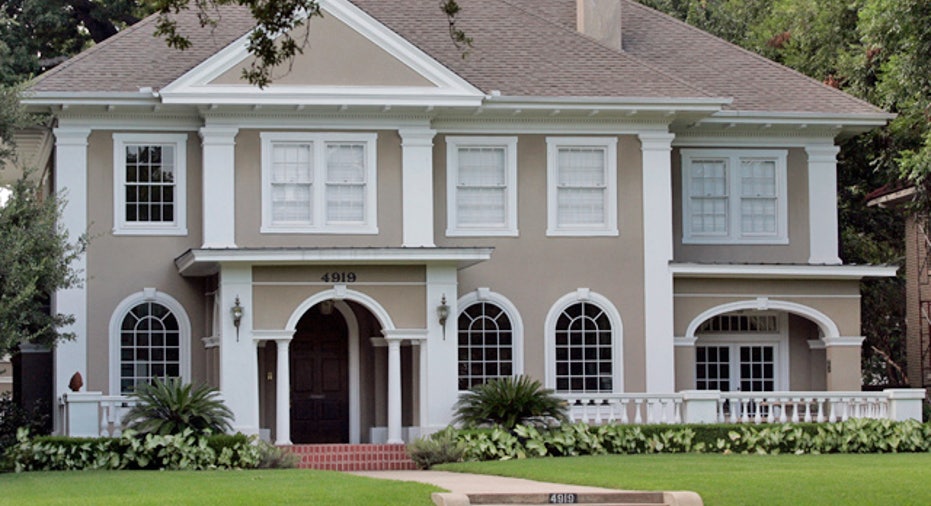Noisy Neighbors? Solutions for Creating Sound Barriers

It’s a common complaint among city-dwellers that the walls and floors separating one apartment from another allow sounds from one side to pass too easily through to the other.
Loss of acoustical privacy hasn’t been a grievance in the suburbs until recently; as land prices increase, lots are getting smaller and houses are getting closer together. Houses are also getting closer to the street and its associated noise pollution. And attached condominiums are being built at a rapid pace – your next-door neighbor may be just on the other side of the wall.
It’s more critical now because so many of us have powerful multi-media centers in our homes, and we like to enjoy our movies with the sound turned up high.
The closer you live to your neighbor, the greater the opportunities for a loss of acoustical privacy. How can you keep the sounds of your daily life from bothering your neighbors and theirs from bothering you?
Hear Ye, Hear Ye…
Sound is transmitted from its source to the ear by waves traveling through the air. The volume of the sound when it reaches you is affected by the distance from the source and the presence of obstacles between the source and the ear.
It’s those obstacles we’re concerned about – how can we make them stop the sound waves? Some materials are better at attenuating sound energy than others; generally the thicker or more massive the material the more sound energy it absorbs. But placing big, thick, heavy materials between living units can be impractical and expensive, especially if you’re remodeling an existing home.
Fortunately there are some easy and inexpensive ways to build good “soundproof” walls and floors and to greatly improve the sound characteristics of existing construction.
Air Lines
When a sound is created on one side of a wall or floor, the energy causes the building materials to vibrate; if that material is a thin, flexible material such as drywall or wood flooring, it picks up the vibration and easily transmits it to the next material in the assembly.
If the next material is air – in a hollow wall or floor assembly for example – then air vibrates, continuing the transfer of energy to the next material. Much of that sound energy can be stopped simply by filling the air space with insulation such as fiberglass batts or cellulose. The “loose” nature of insulation doesn’t transfer energy well and does a very good job of reducing the volume.
Small openings in walls are a big source of sound transfer. Light switches and electrical outlets are installed in cutouts in the drywall and are often aligned directly across from each other. When the electrical boxes are installed, there’s no room for sound insulation. The solution is to move one of the switches or outlets so that they’re not aligned and allow room for insulation behind them. It’s a small detail that can help a great deal.
To reduce the sound leakage even more, caulk the electrical boxes to the drywall to eliminate any air passages from the outside to the inside of the wall. On exterior walls the same concepts apply – insulate and seal all small openings to reduce noise.
Good Vibrations
But blocking air space is only part of the solution. When building materials touch each other they vibrate and transfer sound energy very effectively. There are some specialized materials and a few basic techniques you can use to separate building materials from each other that work in new construction and remodeling.
An acoustic mat is a thin pad that can be rolled out on the floor like carpet padding. It’s placed under a wood floor or under carpeting and helps separate the building materials from each other. Some types of acoustic mats can be installed in walls under the drywall. Either way, an acoustic mat “breaks the connection” between building materials and helps reduce sound transfer.
In new construction and remodeling, a common technique is the use of stand-off clips, metal strips that attach to wood framing. The drywall is then attached to the strips instead of the wood; as sound energy causes the drywall to vibrate, the clips absorb the energy before it is transferred to the framing.
An even more effective but somewhat more expensive solution is a staggered-stud wall. In this framing technique, two parallel walls are built with offset studs; the walls “nest” into each other without touching, and the interior finish is only attached to one side of each wall. This completely separates the materials and is very effective when combined with sound insulation.
Quiet As A House
Although there are many high-tech sound insulation products on the market, they’re not always needed to significantly quiet a home. Simple and inexpensive techniques can eliminate most unwanted sound from adjacent living units, next-door neighbors, and noisy streets. Stay up-to-date!
Related:
Tips for Dealing With Neighbors
How Your Neighbor Can Help You Sell Your Home